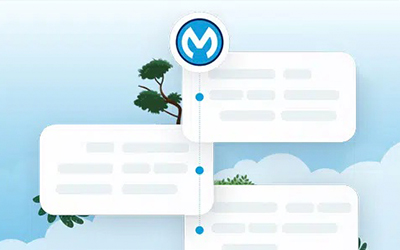Having access to a multitude of applications to manage everything from supply chains to customer engagement has become a staple of any business model. In Australia, the business battlefield necessitates such automated processes to keep up at the frontlines of commercial success. According to Salesforce’s Connectivity Report 2023, the average company uses over 1,000 apps, yet only 29% are integrated. This disparate sprawl of applications metastasises across a business, leading to duplicated efforts, inefficiencies, and inconsistent customer experiences.
Integration is more than a backend task; it’s now a core enabler of business performance. Eighty per cent of IT leaders say integration challenges slow their digital transformation. MuleSoft’s Anypoint Platform offers a solution: a unified, scalable approach that connects data and processes across all systems, both old and new. With a trusted integration partner like MakeSense, the transformation becomes faster, smarter, and more impactful.
This blog explores real-world MuleSoft use cases delivered by MakeSense. You’ll see how businesses like T2, Essential Energy, and Nikon used integration to unlock agility, improve service delivery, and future-proof their operations, without re-architecting everything from scratch.
Top Frustrations for Business Tech Pros

Source: Workato (2024)
Creating a 360° Customer View
The Challenge
Customer expectations have changed. Personalisation, fast response times, and channel consistency are no longer nice-to-haves; they’re the baseline. Yet when customer data lives in silos, across CRM platforms, email marketing tools, billing systems, and service portals, businesses are left with incomplete profiles and disconnected experiences.
Sales reps can’t see open support tickets, marketers guess at preferences, and customer service lacks visibility into transaction history. This problem affects performance at every level of the customer journey.
The Solution
MuleSoft’s API-led connectivity enables organisations to create a unified customer view by integrating these disparate systems. Instead of consolidating data into one massive warehouse, APIs make existing platforms work together. Data flows in real time, enriching CRM screens, analytics dashboards, and self-service portals with accurate, up-to-date information.
These architectures are built to be resilient and extensible. Businesses can plug in new tools, onboard new teams, or pivot strategies without breaking existing integrations.
The Impact
A single customer view improves cross-team collaboration, increases conversion rates, and enables hyper-personalisation. Salesforce research shows that 94% of customers are more likely to repurchase after a positive experience, yet only 32% of businesses currently offer that single customer view. This gap can be closed with integration strategies that deliver revenue growth, retention, and richer insights.
Real-World Example: T2
T2, the Australian premium tea retailer, needed to unify its e-commerce, in-store, and fulfilment systems. With MakeSense, T2 deployed MuleSoft to integrate their ERP, point-of-sale, and logistics platforms. The result? A seamless omnichannel operation where stores also functioned as micro-fulfilment hubs.
Inventory was updated in real time, click-and-collect became more efficient, and customer satisfaction soared. What started as a retail optimisation project became a blueprint for digital retail agility, helping T2 expand globally while staying tightly connected across all touchpoints.

Real-Time Data & Reporting Integration
The Challenge
Modern business moves fast, but many reporting systems don’t. Teams often rely on daily data dumps, manual spreadsheet updates, or lagging BI tools. Leaders must make decisions with stale information, slowing operations and risking missteps.
The Solution
MuleSoft enables real-time data pipelines between source systems and reporting platforms. Whether it’s ERP, CRM, IoT feeds, or third-party analytics tools, APIs ensure that changes made in one system are reflected instantly across all dashboards and alerts. This empowers operational, executive, and technical teams to act on facts, not estimates.
The Impact
According to a McKinsey study, organisations that embrace data analytics can improve their decision-making speed by 5-10 times. Financial targets become easier to hit when teams aren’t waiting for last night’s data sync. Forecasting improves. Risk is reduced. The transition from lagging to leading indicators is more seamless, gaining the agility to pivot, predict, and outperform.
Real-World Example: Essential Energy
Essential Energy, a state-owned utility responsible for power distribution across regional New South Wales and parts of Queensland, embarked on a large-scale digital transformation to serve internal and external stakeholders better. With a vast electrical infrastructure network and diverse legacy systems, Essential Energy modernised its operations without discarding valuable technology investments.
Essential Energy adopted MuleSoft’s API-led integration strategy to simplify IT architecture and reduce operational complexity and partnered with MakeSense to deliver to its vision. This approach enabled the utility to unify engineering, asset and vegetation management, and compliance systems, to name a few, while building strategic capabilities for future growth.
Rather than a disruptive overhaul, the integration modernised existing infrastructure and laid the groundwork for digital connectivity across departments. Field and office teams now have shared, real-time visibility, allowing faster outage response, improved asset lifecycle planning, and proactive compliance reporting. Essential Energy has built a robust platform for collaboration, efficiency, and innovation by capitalising on past technology investments and extending them through APIs.

Modernising Legacy Systems Without Disruption
The Challenge
Many organisations still rely on mission-critical legacy systems, mainframes, old ERP platforms, or bespoke databases. While stable, these systems are hard to connect with modern tools. Replacing them entirely is often cost-prohibitive and disruptive. But leaving them isolated creates innovation bottlenecks.
The Solution
MuleSoft provides a ‘wrap and extend’ approach. Instead of decommissioning legacy systems, businesses use APIs to expose their data and logic securely. These APIs become reusable building blocks that plug into cloud apps, mobile services, and analytics platforms.
The Impact
Businesses have noted reduced integration costs when avoiding traditional ETL and middleware approaches. New customer-facing services can be launched in weeks, not years. Risk is reduced, time-to-value is faster, and legacy platforms are transformed into strategic assets, not liabilities.
Real-World Example: Nikon
Nikon Australia was running on a legacy middleware solution that had become too limited and unstable for their growing integration needs. MakeSense reverse-engineered undocumented legacy integrations and navigated tight holiday-season constraints. Within six weeks, Nikon transitioned to MuleSoft, ensuring zero downtime and improved system reliability.
The new architecture enabled smoother data exchange across finance, logistics, and support systems. Nikon’s IT team gained better visibility, control, and agility without disrupting customer-facing operations.

Conclusion
MuleSoft is more than an integration toolset; it’s a platform for transformation. Whether it’s delivering a single customer view, real-time insights, or modernising legacy infrastructure, the results speak for themselves. T2 achieved omnichannel agility. Essential Energy modernised utilities. Nikon re-platformed without disruption. These aren’t isolated wins; they’re evidence of what’s possible when the right strategy meets the right technology.
And they’re just a few of our successes.
The Tip of the Iceberg of What Mule and MakeSense Can Deliver
MakeSense delivers high-impact MuleSoft solutions. Keep your eyes peeled for our upcoming eBook that dives deeper into MuleSoft use cases across retail, utilities, logistics, healthcare, and beyond. It outlines how API-led integration solves real business problems with measurable outcomes.
If you’re planning a digital transformation or need to optimise what’s already in place, Mule and MakeSense are ready to help. Start with proven experience, a clear roadmap, and solutions that scale with you.








